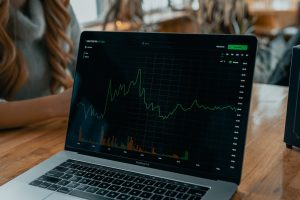Forex trading is a popular market for investors to trade currencies and make profits. However, trading large positions in forex can be a challenging task. Large positions refer to trades that involve buying or selling a significant amount of currency, which can affect the market’s liquidity and price movements. In this article, we will discuss how to trade large positions in forex.
1. Choose a Reliable Broker
The first step in trading large positions in forex is to choose a reliable broker. A broker is an intermediary between the trader and the forex market. It is essential to choose a trustworthy and reputable broker to ensure that the trader’s funds are safe and that trades are executed as quickly as possible.
Traders should look for brokers with low spreads and commissions, as these fees can significantly affect the profitability of large trades. It is also important to choose a broker with a robust trading platform that is easy to use and offers advanced trading tools.
2. Use Limit Orders
A limit order is an order to buy or sell a specific currency at a predetermined price or better. Limit orders are used to ensure that traders get the best possible price for their trades. When trading large positions, it is essential to use limit orders to avoid slippage, which is the difference between the expected price and the actual price at which the trade is executed.
Traders can set limit orders to buy or sell a specific currency at a particular price, and the order will be executed automatically when the market reaches that price. This allows traders to enter and exit trades at the desired price, reducing the risk of slippage.
3. Use Stop Loss Orders
A stop-loss order is an order placed to sell a currency when it reaches a specific price, which limits the trader’s losses. Stop-loss orders are crucial when trading large positions, as they protect the trader’s capital if the market moves against their position.
Traders can set stop-loss orders at a specific price or a certain percentage of their account balance, ensuring that they do not lose more than they can afford. Stop-loss orders should be placed at a level that allows for normal market volatility, but not so close to the entry price that the trade is closed prematurely.
4. Monitor Market Conditions
When trading large positions in forex, it is essential to monitor market conditions carefully. Large trades can affect the market’s liquidity and price movements, so traders must be aware of any news, economic data releases, or other events that could affect the market.
Traders should use technical analysis tools and indicators to monitor the market and identify potential entry and exit points. It is also important to keep an eye on the market’s volatility, as this can affect the execution of trades.
5. Diversify Your Portfolio
Diversification is essential when trading large positions in forex. Investing in multiple currencies and markets reduces the risk of loss and increases the chances of profitability. Traders should avoid investing all their capital in a single trade or currency, as this can result in significant losses.
It is recommended to invest in multiple currency pairs and markets, including major, minor, and exotic currencies. This allows traders to take advantage of different market conditions and reduce the risk of loss.
Conclusion
Trading large positions in forex can be a challenging task, but with the right approach, it can be profitable. Traders should choose a reliable broker, use limit and stop-loss orders, monitor market conditions, and diversify their portfolios. It is also essential to have a solid trading plan and risk management strategy to ensure long-term success in forex trading.






